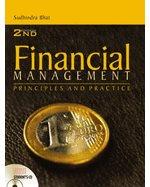Question
4. A speculator has a portfolio which is short in a European call with strike K1 and long in a European call with strike K2
4. A speculator has a portfolio which is short in a European call with strike K1 and long in a European call with strike K2 . These two calls have the same maturity and underlying asset, but K1 > K2. Say the asset has value S(T) at maturity. This portfolio is called a bull spread.
(a) Write an equation to describe the payoff at maturity of the bull spread.
(b) For each of the three cases S(T) < K2 < K1 , K2 < S(T) < K1 and K2 < K1 < S(T), what are the payoffs at maturity in terms of K1, K2 and S(T)?
(c) For this bull spread, plot the payoff at maturity against the asset price S(T), labelling all significant points.
(d) A speculator believes that at maturity the underlying price will be more than K2 but less than K1. Assume this speculators prediction is correct. Why is it better for the speculator to have the bull spread portfolio described above, rather than just a European call with strike K2 ?
(e) A bear spread is a portfolio consisting of a short put with strike K1 and a long put with strike K2 with the same maturities and underlying asset but K1 < K2 . Say the asset has value S(T) at maturity. Write an equation to describe the payoff at maturity for this bear spread. Then, for each of the three cases S(T) < K1 < K2 , K1 < S(T) < K2 and K1 < K2 < S(T), determine the payoffs at expiry in terms of K1, K2 and S(T). Finally, for this bear spread, plot the payoff at maturity against the asset price S(T), labelling all significant points.
Step by Step Solution
There are 3 Steps involved in it
Step: 1

Get Instant Access to Expert-Tailored Solutions
See step-by-step solutions with expert insights and AI powered tools for academic success
Step: 2

Step: 3

Ace Your Homework with AI
Get the answers you need in no time with our AI-driven, step-by-step assistance
Get Started


